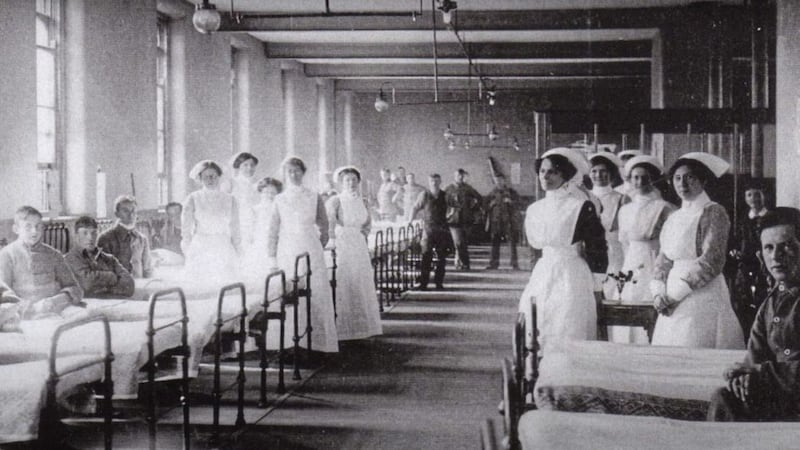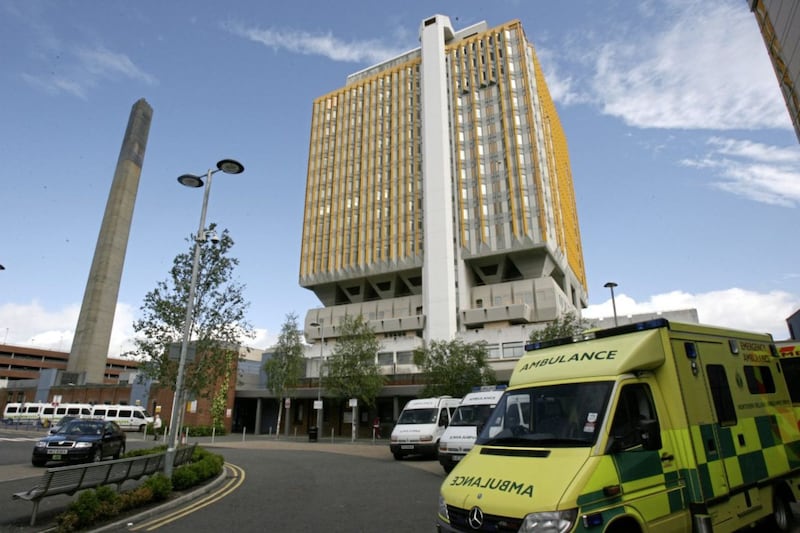FROM a work house `fever hospital' to Northern Ireland's Covid-19 Nightingale hospital and everything in between, a young film maker has completed a short documentary on Belfast City Hospital.
Belfast film maker Éanna Mac Cana's work, which he released on YouTube this month, is funded by Northern Ireland Screen and interwoven with his own personal and family history to the site where he was treated for a serious illness in 2017, aged 19.
Pictures and footage of Mr Mac Cana and his parents, visual artists Paddy McCann and Sharon Kelly, are interspersed throughout the film.
Mr Mac Cana, who is from the south of the city said "for most of my life I have lived a street away from the hospital".
"The building itself has been a part of my visual landscape for as long as I remember," he told the Irish News.
He went to Manchester Metropolitan University in 2016 to study filmmaking, but after returning home for summer holidays in May 2017, he was diagnosed with a rare form of cancer.
This led to him "being treated as an inpatient on the 10th floor of Belfast City Hospital until Sept 2017".
Mr Mac Cana has remained in Belfast since, making film/video work "in response to these experiences and other personal events".
He was inspired by this "coupled with the fact that Belfast City Hospital became Northern Ireland's Nightingale Hospital in response to the Covid-19 pandemic" to make the documentary `Yellowstone: A Brief History of Belfast City Hospital'.
Starting in 1838 when lack of an adequate sewer system saw waves of infections diseases ravage the increasingly industrialised city, it traces the origins from the Poor Houses of the nineteenth century with just "six beds for sick inmates" to "now a 900-bed teaching hospital with emphasis on renal and cancer services".
The medical institution as a concept recognisable today came into being in 1847 with the building of a Fever Hospital - still in use as its Day Procedure Unit.
Mr Mac Cana recounts how "for the first decade each ward had to be lit by one candle", with piles of bodies stored in a `death house'.
A school house, built on the ground was converted into an infirmary in 1875, which "became the main building on the site until the `tower' opened in 1986".
The documentary explores developments in medicine and patient care - influenced by Florence Nightingale - which led to the appointment of the first head nurse in 1884 and the beginning of nurse training at the infirmary for the first time.
As babies began increasingly to be born in hospital, Mr Mac Cana says "abandoned pregnant women often sought refuge there", until a new unit called Ivy Cottage was built to cope with the demand for services.
The documentary tracks improvements in Belfast's infrastructure and change patterns of diseases at the beginning of the twentieth century which saw the number of patients in the fever hospital fall as admissions in the infirmary increased.
The population of the city by this stage "had grown to almost 300,000, the highest in Ireland".
World War One saw sick and injured soldiers from a nearby barracks treated in the infirmary, tragically many surviving the war only to succumb to "one of Belfast's recurring epidemics".
Mr Mac Cana notes that the partition of Ireland saw money being pumped into the north, spent on infrastructure for clean water and sewage disposal, leading to significant improvements in housing an sanitation.
However, in 1924, the documentary reveals that the north had the highest maternal and second highest infant mortality in the UK.
It recounts how the first x-ray machine was installed around there but "was somewhat horrific" and "sparks shot out in all directions" when it was switched on.
Old pictures of the Jubilee Maternity Hospital's 1935 opening by the Duchess of Abercorn and its later incarnation are included and details of its transfer from governance by a voluntary Board of Guardians working with donations to Commissioners and finally the National Health Service.
It documents the 1967 site clearance for the proposed £7 million new tower which was finally completed in 1986 - "10 years after its projected date of opening... at a cost of £72m".
The documentary examines how in the 1970s and 1980s Belfast became regarded as a centre of excellence in neurosurgery and traumatic injuries as a result of catastrophic injuries caused by violence during the Troubles, noting it was "designated for the treatment of army and police and prisoners".






